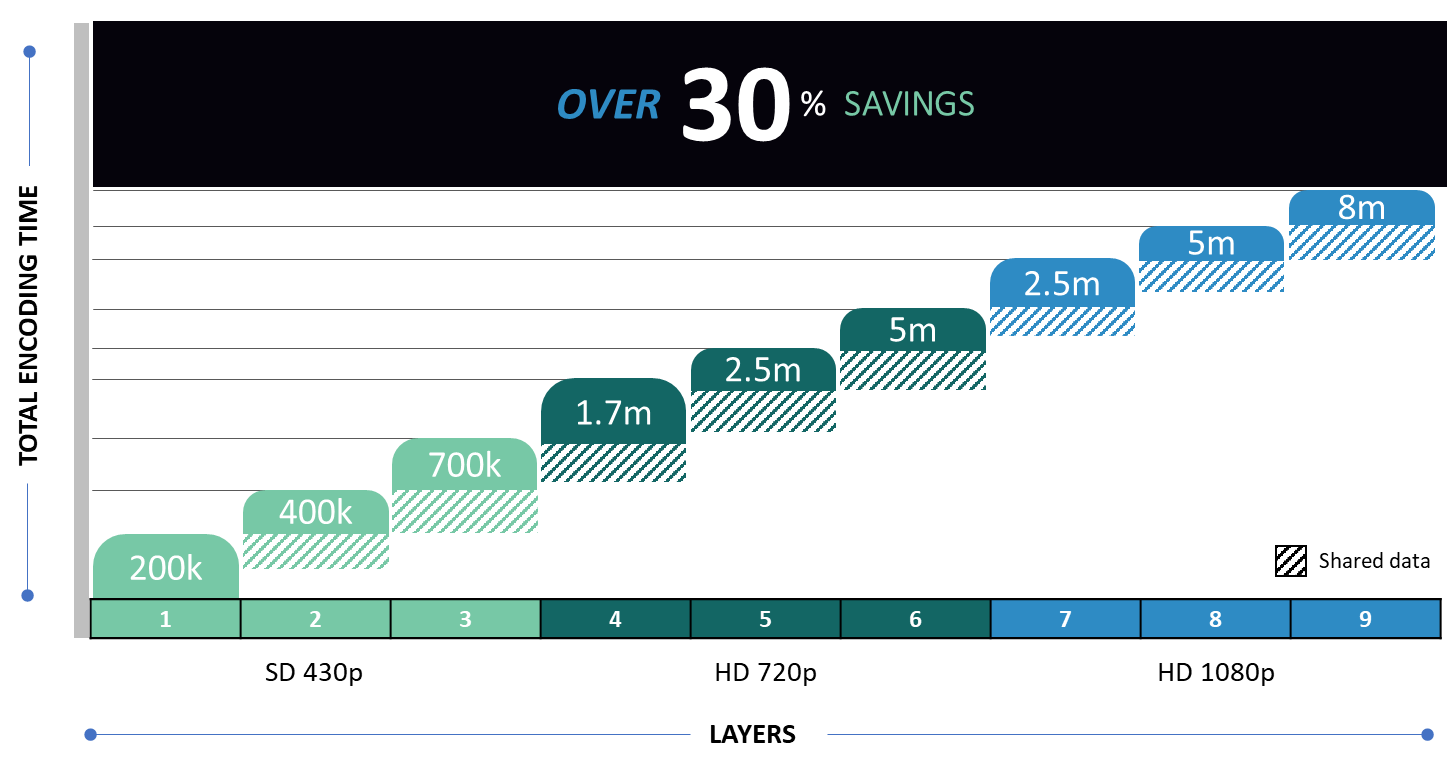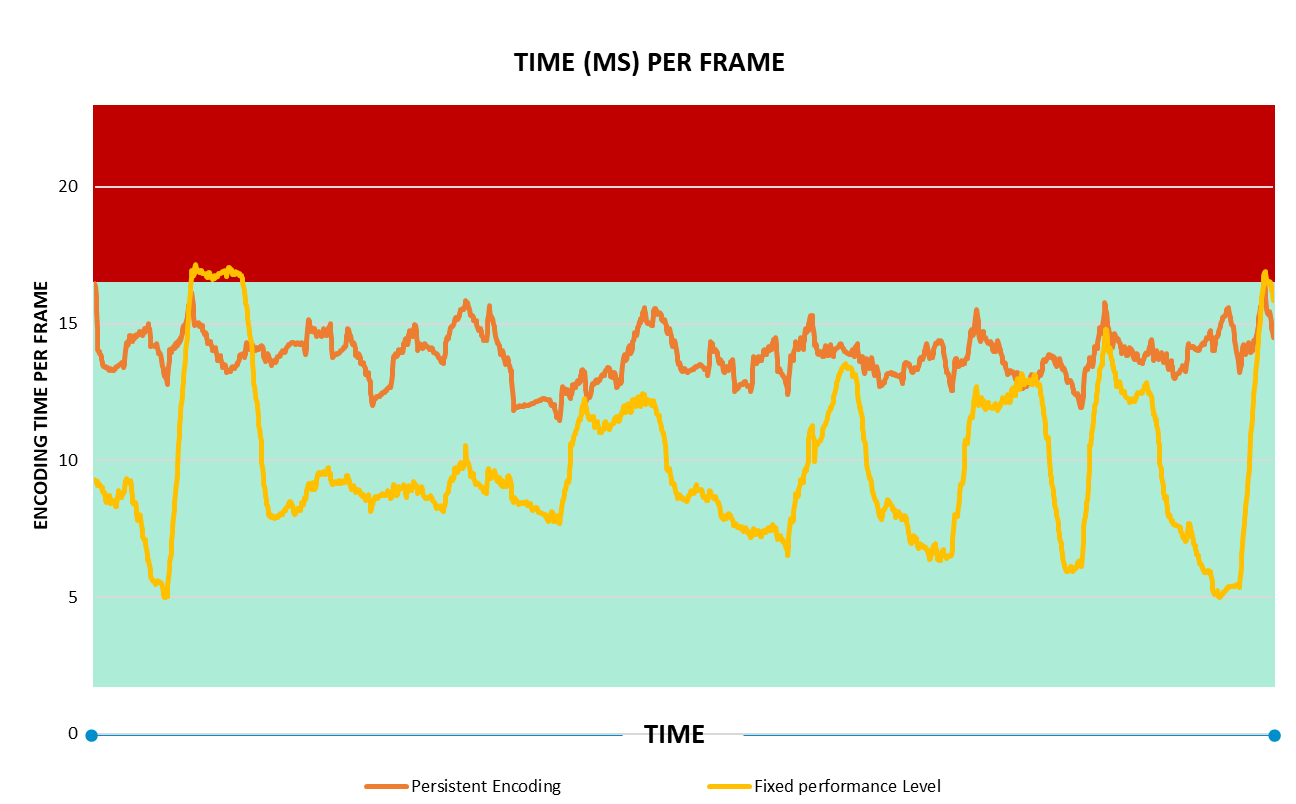
Leveraging Codec Features for Improved Efficiency, Cost Savings and Seamless Delivery
Codecs are used at pretty much every stage of the broadcast workflow, from capturing the content to ingest, right through to delivery to the end user. And just as the tools and technology available to the broadcast industry are always evolving, codecs too are continuously advancing to compress and decompress data with ever greater efficiency and finesse. As users’ needs change and new technologies emerge, new codecs, and codec features, are continually being developed. And while codecs are standardized, an encoder can implement the specification in different ways, which may result in differences in quality and efficiency. Essentially, not all codecs are the same.
We’ll be showcasing three features at IBC that are unique to MainConcept Codecs, namely SABET, AutoLive Encoding and AutoMatch encoding. Each of these features has been designed to enable more efficient, cost effective and seamless content delivery. Before we go on to discuss these features in detail, let’s first consider how the video codecs most widely in use today by the broadcast industry have developed over the last few decades.
Codecs development: AVC, HEVC and VVC
After standardization back in 2003, AVC/H.264 (Advanced Video Coding) quickly gained popularity and emerged as the leading standard for video compression. It became the de-facto standard for streaming video, with most web browsers supporting AVC-encoded video content. Its efficiency and reach made it the codec of choice for broadcast. And since being introduced twenty years ago, AVC has continued to evolve, with extensions and profiles introduced to support higher resolutions and more advanced features.
The demand for even more efficient encoding for ultra-high-definition 4K and 8K content has led to the development of HEVC/H.265 (High-Efficiency Video Coding). HEVC provides more efficient compression, higher video quality, and flexibility in bitrate and resolution. Its improved compression algorithms enable broadcasters to deliver 4K and 8K content with lower bitrates, which reduces bandwidth requirements and storage costs.
But although HEVC was standardized for use a decade ago, it hasn’t really overtaken and replaced its predecessor AVC. The slow uptake can in part be attributed to the patented features and the vagueness to whom payments would be owed, so to use it, vendors need to apply for a license which can be complex and costly. Additionally, to deliver more efficient compression, the encoder requires more processing power. While the decoding side is not significantly more complex, until recently, there have been very few devices supporting native decode. Today though, the number of devices on which HEVC encoded content could be played has greatly expanded. However, demand for it is on the rise, as is evident now that Chrome and other browsers have enabled support for adaptive streaming of HEVC video.
We’re now also seeing the much newer codec VVC/H.266 (Versatile Video Coding) starting to make waves in 8K and 4K. As the delivery of digital video continues to evolve, so do its underlying technologies. VVC is the next big codec to support this evolution. With maximized visual quality and higher resolution in mind, VVC has been standardized to adapt to the changing ways video is created and consumed.
Let’s turn now to the unique features that MainConcept’s codecs bring to the table.
Reduce content delivery costs with SABET™
Broadcasting video content is a complex task, in part because content has to be encoded multiple times to meet the diverse preferences of users in terms of variables such as devices, screen sizes and resolution. With Adaptive Bitrate (ABR) encoding, many of these encoding steps are repetitive, which is inefficient. MainConcept removes redundant encoding steps within SABET encoding encoding.
Exclusively available with MainConcept’s HEVC Encoder SDK and VVC Encoder SDK, SABET (Smart Adaptive Bitrate Encoding Technology) improves processing efficiency by simplifying and streamlining the encoding process for both live and VOD workflows. This means less processing time and CPU load, which crucially reduces your overall content delivery costs. But how does it work?
From a user and API standpoint, this approach simplifies encoder setup, ensuring that all renditions share the same IDR (Instantaneous Decoder Refresh) frame placement and frame structure. From an encoding perspective, SABET reduces processing demands by up to 30% for a typical HLS (HTTP Live Streaming) bitrate ladder by making intelligent use of data which in other cases would be duplicated. This leads to quicker and more cost-effective encodings compared to traditional single-instance encoding methods. Put simply, a 30% savings in CPU load equates to time and cost savings.
Achieve the best possible quality automatically with AutoLive Encoding
Broadcasters naturally want to achieve the best possible playback quality, but this can be challenging with live encoding. To maintain high quality, ideally, you need a constant frame rate, and for live encoding, a constant frame rate means constant encoding time per frame. If the encoding time is longer than the image time, this can lead to stuttering, unstable frame rates and dropped frames. And in other cases, when the content is easy to encode, encoding can happen too quickly. This is also not ideal because at those times, it’s possible to achieve higher quality than would have usually been achieved with the standard encoding settings. Stabilizing the video frame rate is also a particular problem for broadcasters using shared encoding resources, such as AWS.
To address this encoding challenge and achieve guaranteed smooth video encoding at maximum quality, MainConcept has developed AutoLive Encoding. The feature is included with MainConcept’s HEVC Encoder SDK and soon to be incorporated into its VVC Encoder SDK.

AutoLive Encoding auto-adjusts the performance on each frame to ensure constant encoding time. It boosts quality on simple scenes and increases the performance level on scenes with medium complexity, all without any user interaction. In a nutshell, AutoLive Encoding automatically and dynamically adjusts the encoding quality and the CPU utilization to have an as constant as possible frame rate and no frame drops, for guaranteed smooth video encoding and maximum quality.
Split and stich effortlessly with AutoMatch Encoding
This feature addresses a common challenge faced by content owners, especially those dealing with vast libraries of pre-encoded content for OTT distribution. These days, most content owners and broadcasters have a large library of assets which they are continually adding to, to meet viewer demands for new content. The challenge comes when they want to mix and match old and new content for playback, because content encoded at different times will have different encoding requirements. This is where things get tricky because the broadcaster will most likely no longer have access to the original encoder or settings, making it nearly impossible to seamlessly join the new material with the existing content.

This could lead to disruptions in playback, causing frame drops as the decoder reinitializes when encountering new material. So, how do we overcome this hurdle? Our approach involves leveraging the capabilities of the AVC and HEVC encoders to analyze the original bitstream and match it as closely as possible. This means that decoder initialization becomes minimal or, in the case of our own encoders, zero. You can seamlessly combine and play content from various sources by simply adding them to a playlist. The result? A smooth playback experience without any disruptions or hiccups. This approach differs significantly from the traditional encoder configuration process, where you'd specify bitrates, performance levels, and various features.
Powering the broadcast industry
Codecs have come a long way since the early days of video, transforming the broadcast industry by making high-quality multimedia content accessible to a global audience. As we look ahead, the continual development of codecs will pave the way for new innovations and more immersive viewing experiences. The broadcast industry will continue to evolve, powered by codecs that enable higher quality, lower bandwidth requirements, and enhanced accessibility for viewers worldwide. And MainConcept’s codecs, that are already used to process over 90% of the world’s professional video, will continue to be at the forefront.
MainConcept will be at IBC, showcasing its codec technology with unique features: SABET, AutoLive Encoding, and AutoMatch Encoding. Call by booth 7.C27, or get in touch to find out more.



